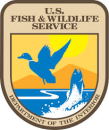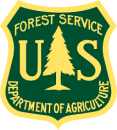Location



















States
IdahoEcosystem
River/stream, UrbanIntroduction
The Teton River, a tributary of Henry’s Fork of the Snake River, runs through southeastern Idaho. This watershed supports agriculture, a central driver of the region’s economy since the 1880’s. Currently, population growth has increased water demand and is impacting irrigators, residential water users, and ecosystems that support fish and wildlife. The population of Teton County increased by 39% from 2000 to 2007, the fourth fastest growing county in the nation at the time, and is currently growing at a rate of 10%. As water availability and reliability have decreased in the Teton Watershed from population growth and more frequent drought conditions, water management has become more challenging as stakeholder needs have increased.
This has called for increased collaboration among stakeholders. Through a Bureau of Reclamation (Reclamation) WaterSMART grant, Friends of the Teton River convened diverse stakeholders to form the Teton Water Users Association (TWUA), a partnership to address declining water availability in the Teton Watershed. Water availability has been declining due to reduced snowpack, earlier spring runoff, hotter and drier summers as a result of climate change climate change
Climate change includes both global warming driven by human-induced emissions of greenhouse gases and the resulting large-scale shifts in weather patterns. Though there have been previous periods of climatic change, since the mid-20th century humans have had an unprecedented impact on Earth's climate system and caused change on a global scale.
Learn more about climate change , and increased demand from population growth.
The TWUA addressed the need for greater stakeholder engagement through the collaborative creation of a water management plan. This plan balances the needs of the community including water availability for irrigation, municipal and residential water supply, and healthy ecosystems by recharging snowmelt into the aquifer. TWUA aims for this to provide a larger, more stable water supply for all stakeholders. Stakeholders of the TWUA are from many public and private organizations including Friends of the Teton River, the Teton Soil Conservation District, Henry’s Fork Foundation, water rights holders and canal companies, city governments, and the Natural Resources Conservation Service, among others.
Key Issues Addressed
Decreasing water availability threatens the local economy and aquifer levels needed to sustain productive agriculture, residential water, and healthy ecosystems in the Teton Valley. Historic land use and rapid development have led to habitat loss and water quality concerns, while a growing population puts pressure on limited water resources.
In addition, base flows of Teton River tributaries have decreased through aquifer drawdown as agricultural practices have shifted and increasing residential and municipal consumptive use has increased water demand. The reduction of base flows has interfered with movement of critical fish and wildlife species and healthy geomorphic processes of the Teton River. In general, a shift to a more residential water management system threatens the value of agriculture and water supply in the Teton Watershed.
Overall, climate change is causing increased drought conditions in the Greater Yellowstone ecosystem, threatening water reliability. Low river flows from reduced snowpack and hotter, drier summers cause increasing water temperatures that threaten cold water fish species such as the Yellowstone Cutthroat Trout (Oncorhynchus clarkii bouvieri). According to the Idaho Department of Fish and Game, Yellowstone Cutthroat Trout experienced a 95% decline in populations from 1999-2003 and, as of 2016, occupied only 27% of their historic range. Future water availability in the watershed will be more unpredictable as climate change factors compound with other stresses such as changing land and water use from development.
Project Goals
- Secure and maintain a safe, affordable, high-quality source of water for agriculture, residents and municipalities, and healthy ecosystems
- Engage diverse stakeholders to develop a water management plan that addresses their needs and creates long-term solutions for water availability and reliability
- Improve stream conditions, water quality, and flows in the Teton River
Project Highlights
Trout Rebounds: As a result of targeted restoration efforts, the Teton River watershed is the only watershed in the Yellowstone Cutthroat Trout’s range that has had rebounding populations.
- Founded in Science: Individuals and organizations within and outside of the TWUA conducted watershed studies on the hydrology of the Teton River prior to and during the formation of the water management plan. For example, a researcher developed functional hydrological models that were later actively used to monitor and gain a better understanding of the physical impacts of storing water in the aquifer and how it returns to the river in late summer.
- Project Selection: The TWUA convened key stakeholders, such as landowners and leaders in the community, from diverse backgrounds to discuss and fulfill common goals within the watershed. The TWUA outlined their goals, core values, and priorities in the water management plan. Based on the goals and priorities of three stakeholder groups (agricultural, municipal/county, and conservation), each group brainstormed water management projects that would meet their needs. Finally, stakeholders worked together to identify and pilot one project that would balance the needs of all three groups: a groundwater recharge project.
- Groundwater Recharge Project: Within the water management plan, the TWUA outlined goals, methods, outcomes, necessary investments, and actions for the selected groundwater recharge project. The initial project goal was to recharge the aquifer by 10,000 acre-feet. This goal was based on years of monitoring and hydrologic analyses, coupled with the ability of farmers to shift irrigation practices and techniques, including flood irrigation. Activities necessary to achieve this goal include investing in water measuring technologies and utilizing mapping and modeling for infrastructure improvements. This level of detail was significant and necessary to begin implementing the groundwater recharge project.
- Conservation Priority: Groundwater recharge areas and targets were aimed at improving late-season flows and water temperatures in the Teton River, when Yellowstone Cutthroat Trout need it most, to meet federal and state conservation goals.
Lessons Learned
The TWUA prioritized the development of a project that would improve the health of the watershed by better managing water supplies and increasing late-season flows, when it is most essential for farmers and fish. The groundwater recharge project was chosen to address these priorities because it can improve water availability for irrigation, municipal and residential purposes, and can help maintain and improve habitat and base flows for species such as the Yellowstone Cutthroat Trout. By identifying stakeholders’ goals and priorities early in the process, and working together to identify project ideas, the recharge project had measurable benefits and invigorated enthusiasm among stakeholders.
Teton Valley is a small community where relationships are particularly important. Friends of the Teton River, who facilitated the formation of the TWUA, has over twenty years’ experience bringing stakeholders together in the Teton Watershed. Previous relationships helped organize the TWUA quickly and effectively because of long-standing trust among stakeholders.
Creating a detailed water management plan requires a significant amount of time and legwork. Legwork included initial outreach to influential individuals in the community, and organizing honest conversations with stakeholders about their needs and challenges. It is important to anticipate that though detailed discussions take a considerable amount of time, they are necessary to develop a plan that is based in science and meets objectives on the ground. However, it is also important to understand that the process of creating the plan may deviate from initial expectations, and this is reasonable. Having open communication channels among stakeholders, such as transparent one-on-one and group conversations, streamlined the process of preparing the water management plan. This water management plan and the formation of the TWUA are large steps towards managing water more deliberately and creating more water availability in the face of a changing Teton Watershed.
Next Steps
- Continue to develop and refine strategic priorities for implementing groundwater recharge, fish passage fish passage
Fish passage is the ability of fish or other aquatic species to move freely throughout their life to find food, reproduce, and complete their natural migration cycles. Millions of barriers to fish passage across the country are fragmenting habitat and leading to species declines. The U.S. Fish and Wildlife Service's National Fish Passage Program is working to reconnect watersheds to benefit both wildlife and people.
Learn more about fish passage , and restoration projects in the Teton River Watershed - Increase education and outreach to teach partners and the public about the benefits of groundwater recharge
- Involve new partners in the TWUA, such as those with larger management scopes and policy decision capacities in the Idaho region and beyond
Funding Partners
Resources
- Friends of the Teton River Website
- Friends of the Teton River’s Aquifer Recharge Resource Kit
- Friends of the Teton River Winter 2016/17 Newsletter
Contacts
- Anna Lindstedt, Director of Development, Friends of the Teton River: anna@tetonwater.org
- Sarah Lien, Water Resources Director, Friends of the Teton River: sarah@tetonwater.org
Case Study Lead Authors
- Nicole Williams, CART Student Intern, University of Arizona
- Anna Lindstedt, Friends of the Teton River
Suggested Citation
Williams, N. and Friends of the Teton River, eds. (2022). “Improving Water Availability Through the Teton Water Users Association’s Water Management Plan.” CART. Retrieved from https://www.fws.gov/project/teton-water-management-plant.








